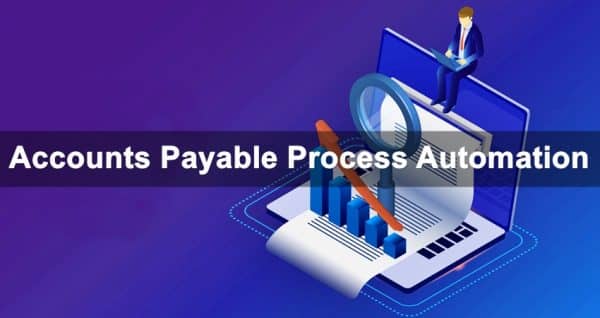Invoice Financing vs Invoice Factoring
The key distinction between invoice factoring vs invoice financing is who collects on the outstanding invoices of the business/company. The consumer retains complete control over collections while using invoice financing. Invoice factoring, on the other hand, is when a company buys unpaid invoices and takes over the collection process. In both scenarios, businesses are given an advance of about 80% of their outstanding invoices upfront, with the remainder (minus costs) on the way when the consumer has settled the invoice.
Overview
It’s safe to say that you are not alone if you are a small business owner who is upset by pending accounts receivables. According to surveys, over 60% of bills are paid late, with 20% being paid more than two weeks late. And like it’s often the case, late payments leave you cash-strapped, preventing you from paying your staff, paying your rent, or taking advantage of critical business opportunities.
However, when it comes to coping with delayed cash flow, both invoice financing and invoice factoring are viable options. But then looking at the structure of financing and how payment is collected from the consumer, it’s evident that there are huge differences between the two. So let’s quickly go over the similarities and differences between the two to help you in deciding the best option.
What Is Invoice Financing?
Invoice financing, also known as invoice discounting, is when you borrow money against your outstanding accounts receivables. Basically, in the form of a loan or line of credit, a lender pays you a part of your overdue invoices upfront—usually 80 percent to 90 percent. You’ll repay the lender the amount borrowed plus fees and interest after your client pays the invoice. In this case, your company is still liable for recovering money due to you by your customers.
In some cases, however, the invoice finance provider works behind the scenes to link up with your accounts receivable systems. When your customer pays the invoice, they may subtract their costs automatically before delivering the balance to you.
Invoice finance is ideal for firms who require cash urgently and are confident that they will be able to collect on outstanding invoices from their clients.
Read Also: Invoice Financing: Definition, Types, Pros & Cons
Example of Invoice Financing
Let’s assume you’re a restaurant wholesaler (XYZ Wholesaler). You send Ben Restaurant a $5,000 invoice for ingredients you sold her. The invoice’s terms are NET 30, therefore Ben has one month to pay. Meanwhile, you require funds to pay your employees, so you seek an advance from an invoice financing company. They pay you $4,000 in advance for 80% of the invoice.
You follow up with Ben for payment, and he sends you a $5,000 check within a month. You pocket $850 and send the rest of the $4,150 to the invoice financing firm. In total, you will receive $4,850, or 97 percent of the invoice value. This means that a charge of $150 is paid to the invoice finance firm.
What is Invoice Factoring?
Invoice factoring is a unique type of invoice finance. An invoice factor buys the accounts receivables you owe and collects them from your customers. The lender will pay you a percentage of the total overdue invoice amount upfront if you use invoice factoring. Then they’ll be in charge of collecting the entire sum. They’ll advance you the difference once they’ve collected the full amount, keeping a percentage for their services. In this instance, your clients will interact with the factoring company directly to make their payment, not you.
In other words, businesses with outstanding receivables of 60 to 90 days or longer may benefit from accounts receivable factoring, as well as those who do not want to recover outstanding receivables on their own.
As a result, Invoice factoring is often more expensive than invoice financing because you delegate collection responsibilities to the invoice factoring provider/company. Basically, they will charge you more because the factor is willing to take the risk that your customer may not pay the invoice.
So if you decide to employ invoice factoring, be sure you’re OK with someone else dealing with your consumers. It’s possible that the fact that you’re not handling the payment yourself indicates that you’re utilizing finance. However, some factoring organizations will be as nonspecific as possible when contacting customers, making it appear as though they are a representative of your company.
Read Also: Invoice Factoring: All You Need, Explained!! (+ Loan Options)
Example of Factoring Invoices
Assume again you’re Wholesaler, and you’ve sent Ben Restaurant a $5,000 NET 30 invoice for an order of fresh products. You urgently require funds, so you contact an invoice factoring firm. The factor buys your invoice and gives you $4,250 in cash to use for your business.
The factor then contacts Ben to collect payment for the invoice. He pays on time and sends his check to the factoring company directly. After deducting their 4% charge, the factor pays you $550. You get 96 percent of the invoice value, or $4,800, in total. Fees for the factor are $200.
The Benefits of Invoice Financing vs Invoice Factoring
Whether you use invoice financing or invoice factoring, there are various advantages to this type of business financing, the most important of which is that it can swiftly smooth out cash flow concerns. Businesses can utilize invoice finance and factoring to pay their employees and regular bills instead of waiting for payment on outstanding invoices.
Also, depending on whether you use invoice factoring or invoice financing, it may be your only alternative if you are unable to obtain other forms of business funding. You may find this sort of funding easier to obtain than others because these lenders focus more on your invoices and less on your business’s financial health and credit.
Invoice factoring, for example, has the advantage of guaranteeing at least a portion of your outstanding accounts receivables and removing the burden of collections from a business owner’s already hectic schedule. If your company has a lot of late-paying clients or unpaid invoices, invoice factoring could be a good way to make sure you obtain at least some of what you’re due, giving you the cash you need to stay afloat.
Another advantage of invoice factoring is the low risk of not collecting outstanding payments for your company. When the factoring company assumes responsibility for collecting receivables and you receive your cash, they also assume the risk that your clients will not pay. Unlike a business loan, which requires you to make payments whether or not your customers pay you, invoice factoring eliminates that risk from your books.
Disadvantages of Invoice Financing vs Factoring
While invoice financing may appear to be an easy and quick solution to cash flow problems, it may be costly, especially because your costs are based on when the customer pays you back. Each month that the invoice stays unpaid, a particular percentage—usually between 1% and 4.5 percent—is charged.
Furthermore, as previously said, if you choose factoring finance and the lender is responsible for collecting outstanding sums from your clients, there is no way to hide the fact that you have engaged in a factor arrangement. This could be a warning indication to customers that your company is in danger. Fortunately, most factoring companies want to keep your business, so they’ll try to be as unobtrusive as possible and present themselves as a member of your team.
What Is the Difference Between Invoice Finance and Factoring?
The key distinction between invoice factoring vs invoice financing is who collects on the outstanding invoices of the business/company. The consumer retains complete control over collections while using invoice financing. Invoice factoring, on the other hand, is when a company buys unpaid invoices and takes over the collection process.
Is Invoice Financing a Good Idea?
With the luxury of easy and quick access to business financing when you have unpaid invoices, it goes without saying that invoice financing is a good idea. Basically, businesses can utilize invoice financing to pay their employees and regular bills instead of waiting for payment on outstanding invoices.
What Is Invoice Finance Factoring?
Invoice factoring is a unique type of invoice finance. An invoice factor buys the accounts receivables you owe and collects them from your customers. The lender will pay you a percentage of the total overdue invoice amount upfront if you use invoice factoring.
What Is the Risk of Invoice Financing?
The main risk of this type of financing is that businesses will depend too much on it. Also, the costs of invoice financing can go up if your customers don’t pay on time or if you have to wait a long time for payment.
What Is the Importance of Invoice Financing?
Invoice financing helps businesses run by giving them immediate cash flow based on their accounts receivable. This means they don’t have to wait for their customers to pay their invoices in full before they can pay their employees, suppliers, and reinvest in operations and growth.
Conclusively
The challenges of covering current expenses, debt repayments, and other financial responsibilities frustrate many small business owners.
Dealing with this, attempt the simplest and most successful methods for managing your financial flow, to begin with. For example, you can make it easier for clients to pay, send invoices early, give discounts for early payment, and use online accounting and payment systems. It might be a good idea to start with these strategies.
However, if your cash flow continues to be a problem, you can then look into invoice financing, factoring, or another sort of business financing.






